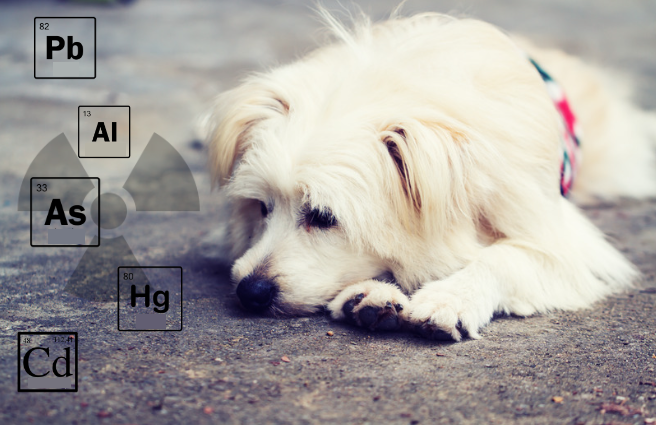Every responsible dog owner knows that diet, an appropriate level of physical activity and regular vet check-ups are key to maintaining a dog’s health. But have you ever considered how invisible threats, like heavy metals, can impact your furry friend’s health?
What are Heavy Metals?
Heavy metals are a group of elements that occur naturally in the environment. Some of them, such as zinc, iron, and copper, are essential for a dog’s health in the right amounts. Others, like lead, cadmium, mercury, arsenic, and nickel, can be toxic even in small doses.
How are Dogs Exposed to Heavy Metals?
Dogs can be exposed to heavy metals in several ways, including swallowing contaminated soil, eating contaminated food, drinking contaminated water, and even through breathing contaminated air. Additionally, some dog grooming products, toys, and even some dog foods can contain heavy metals.
How do Heavy Metals Impact a Dog’s Health?
Long-term exposure to heavy metals can lead to a range of health problems in dogs. Here are a few examples:
- Neurological issues: lead and mercury are neurotoxins that can cause behavioral disturbances, seizures, and even degeneration of the nervous system. For instance, the American Veterinary Medical Association states that even small amounts of lead can cause subtle changes in a dog’s behavior and mood. In contrast, higher doses can lead to seizures and coma.
- Heart disease: arsenic, cadmium, and lead can increase the risk of heart disease in dogs. For instance, a study at the University of Minnesota showed that dogs exposed to arsenic are twice as likely to develop heart disease.
- Digestive issues: heavy metals can cause nausea, vomiting, diarrhea, and even loss of appetite in dogs. This fact is supported by a study from the College of Veterinary Medicine at the University of Illinois, which showed that 70% of dogs exposed to heavy metals suffer from chronic digestive issues.
- Kidney and Liver Damage: Lead, cadmium, and mercury can damage the kidneys and liver, which are responsible for removing toxins from a dog’s body. According to research published in the Journal of Veterinary Internal Medicine, dogs exposed to these heavy metals have a threefold increased risk of developing kidney and liver diseases.
How to Prevent Exposure to Heavy Metals?
The most important step in preventing exposure to heavy metals is to monitor your dog’s diet and environment. Avoid feeding him food that could have been contaminated with heavy metals. It can be difficult or even impossible for an owner to regularly test the water a dog drinks, as well as the soil in their yard. However, there are diagnostic tests that can diagnose the level of heavy metals in a dog’s body. Thanks to them, it is possible to detect the problem at an early stage and implement appropriate therapy.
Conclusion
Heavy metals are an invisible threat that can have serious implications for your dog’s health. That’s why it’s so crucial for you as a dog owner to be aware of this risk and take the necessary steps to provide your four-legged friend with a safe and healthy environment.
References
- “Heavy Metals and Your Pet’s Health”, Dr. Jean Dodds’ Pet Health Resource Blog
- “Pets and Heavy Metal Toxicity”, Natural Health & Healing 4 Animals
- “Metal Poisoning in Dogs”, PetMD
- “Effects of Heavy Metals on Human Health”, Medscape Public Health
- “The Pet Health Dangers of Heavy Metals”, Dogs Naturally Magazine
- “Environmental Contaminants in Pet Dogs and Cats”, National Institutes of Health










